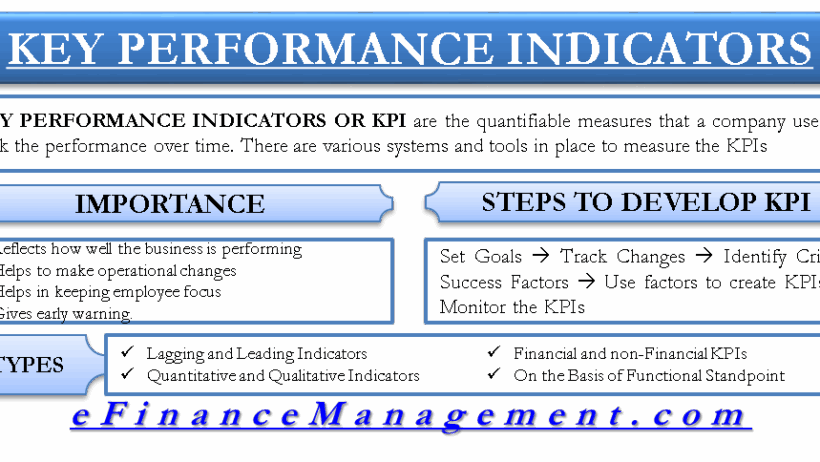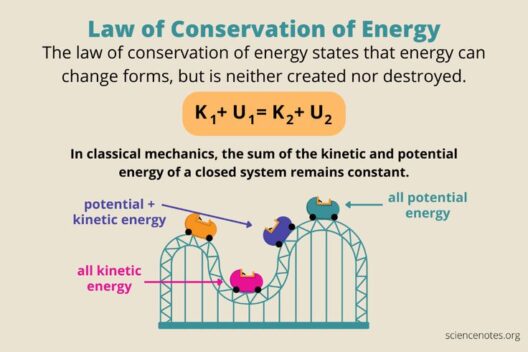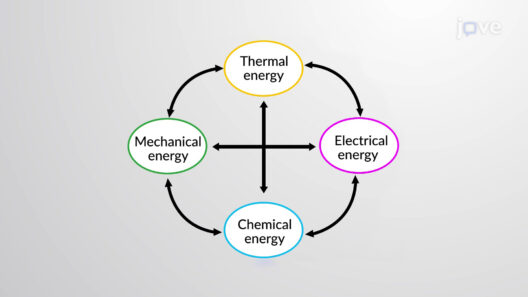Energy conservation is a crucial aspect of environmental protection and sustainability. As the world grapples with the dual challenges of climate change and finite resources, understanding how to assess whether energy is conserved within various systems becomes paramount. This exploration delves into the key indicators that signify effective energy conservation, offering insights that are not only beneficial for individual households but also for larger industrial operations and municipal infrastructures.
First and foremost, one of the most observable indicators might be the reduction in energy bills. When effective energy conservation strategies are implemented, energy consumption diminishes, manifesting as decreased utility expenses. Tracking fluctuations in monthly bills provides tangible evidence of the effectiveness of energy-saving measures. However, it is vital to consider external factors such as seasonal variations in weather and changes in occupant behavior, which may also affect overall consumption.
Another indicator is the monitoring of energy usage through smart meters or energy management systems. These devices furnish real-time data about energy consumption patterns. By utilizing such technology, users can pinpoint periods of excessive usage and make informed decisions regarding operational adjustments. Furthermore, systematic analysis of this data over time yields valuable insights regarding energy efficiencies and inefficiencies within a space.
Comparative analysis with historical data presents an additional metric for evaluating energy conservation efforts. By meticulously recording and assessing past energy usage over similar time frames, entities can gauge their progress. For instance, analyzing energy consumption before and after implementing energy-efficient appliances can elucidate the effectiveness of the upgrade. This historical reference can serve as a benchmark for future energy practices and further refinements.
In contexts that involve numerous stakeholders, such as corporate environments or community initiatives, establishing key performance indicators (KPIs) becomes essential. KPIs establish measurable values that demonstrate how effectively objectives are being met. In the realm of energy conservation, KPIs can range from the percentage of energy saved relative to previous consumption to reductions in carbon emissions attributed to energy-efficient practices. This structured approach aids in forming strategies that are not only impactful but quantifiable.
A further dimension involves the qualitative assessments of energy conservation measures. Stakeholders must also gauge the comfort levels of occupants in a building post-implementation of energy-saving measures. For instance, improved insulation and energy-efficient heating systems may result in more consistent indoor temperatures. By surveying occupants, organizations can ascertain satisfaction levels and identify any areas needing remedial action, thereby linking comfort with conservation efforts.
The integration of renewable energy sources also serves as a robust indicator of energy conservation. Utilizing solar panels, wind turbines, or geothermal heating systems often reflects a conscious effort to minimize reliance on fossil fuels. The degree to which renewable resources contribute to overall energy supply can be tracked to assess the effectiveness of conservation programs. Communities and organizations that invest in these technologies typically exhibit lower overall energy demands, which complements broader environmental objectives.
Moreover, the advent of energy audits provides an indispensable tool for discerning energy conservation success. An energy audit involves a thorough assessment of energy use within a facility, identifying areas where energy is squandered and suggesting improvements. The visible enhancements following an energy audit—such as the installation of LED lighting or the incorporation of energy-efficient heating, ventilation, and air conditioning (HVAC) systems—can serve as clear indicators of conservation measures’ effectiveness.
Behavioral changes among occupants represent an intangible yet potent indicator of energy conservation. Educational campaigns aimed at promoting energy-saving habits can lead to significant shifts in how individuals interact with energy-consuming devices. Notably, initiatives might encourage practices such as turning off lights when not in use or employing energy-efficient settings on appliances. Surveying participants about their habits can yield data regarding behavioral compliance and the penetration of conservation messages into daily life.
Examining occupant training and awareness is equally important. Providing information on the importance of energy conservation fosters a culture that prioritizes sustainability. This training can include understanding how to operate energy-efficient devices or the implications of peak energy usage times. With a well-informed network of occupants and administrators, the efficacy of energy conservation initiatives is likely to improve significantly.
Lastly, the environmental impact is perhaps the most profound indicator of energy conservation success. Metrics such as reduced greenhouse gas emissions, lower pollution levels, and improvements in local air quality illustrate the broader implications of successful energy conservation. Connecting energy conservation efforts with global environmental goals highlights its strategic importance, emphasizing that every small effort adds up to monumental change.
In conclusion, recognizing whether energy is conserved necessitates a multifaceted approach comprising quantitative measurements and qualitative assessments. Key indicators such as reduced energy bills, historical data comparison, and stakeholder satisfaction surveys provide valuable insights into the effectiveness of conservation initiatives. The amalgamation of these metrics illuminates the path toward enhanced sustainability while fostering greater community involvement and environmental stewardship. As awareness and technology evolve, so too will the methodologies for gauging energy conservation efficacy, ultimately contributing to a more sustainable future.







